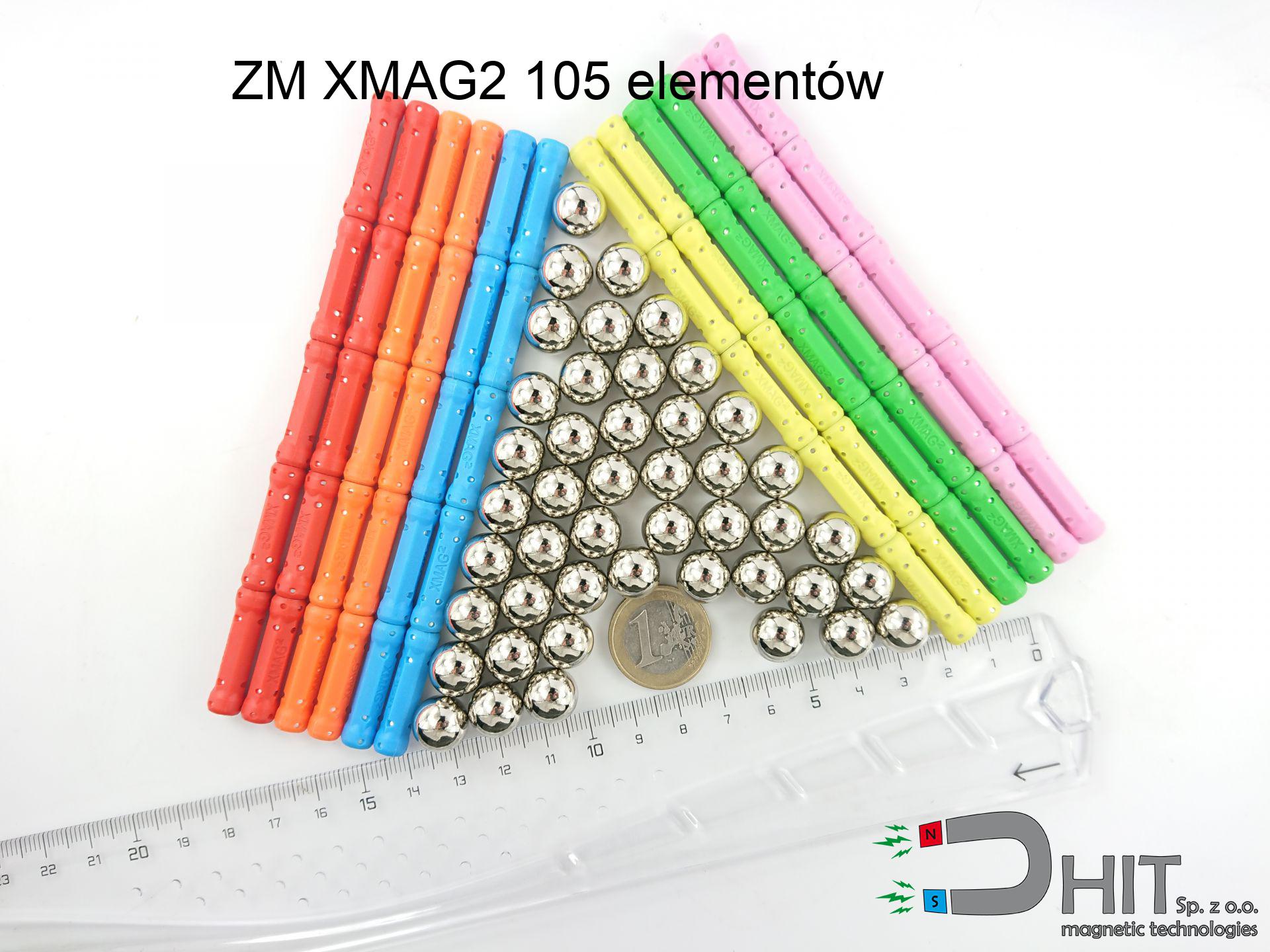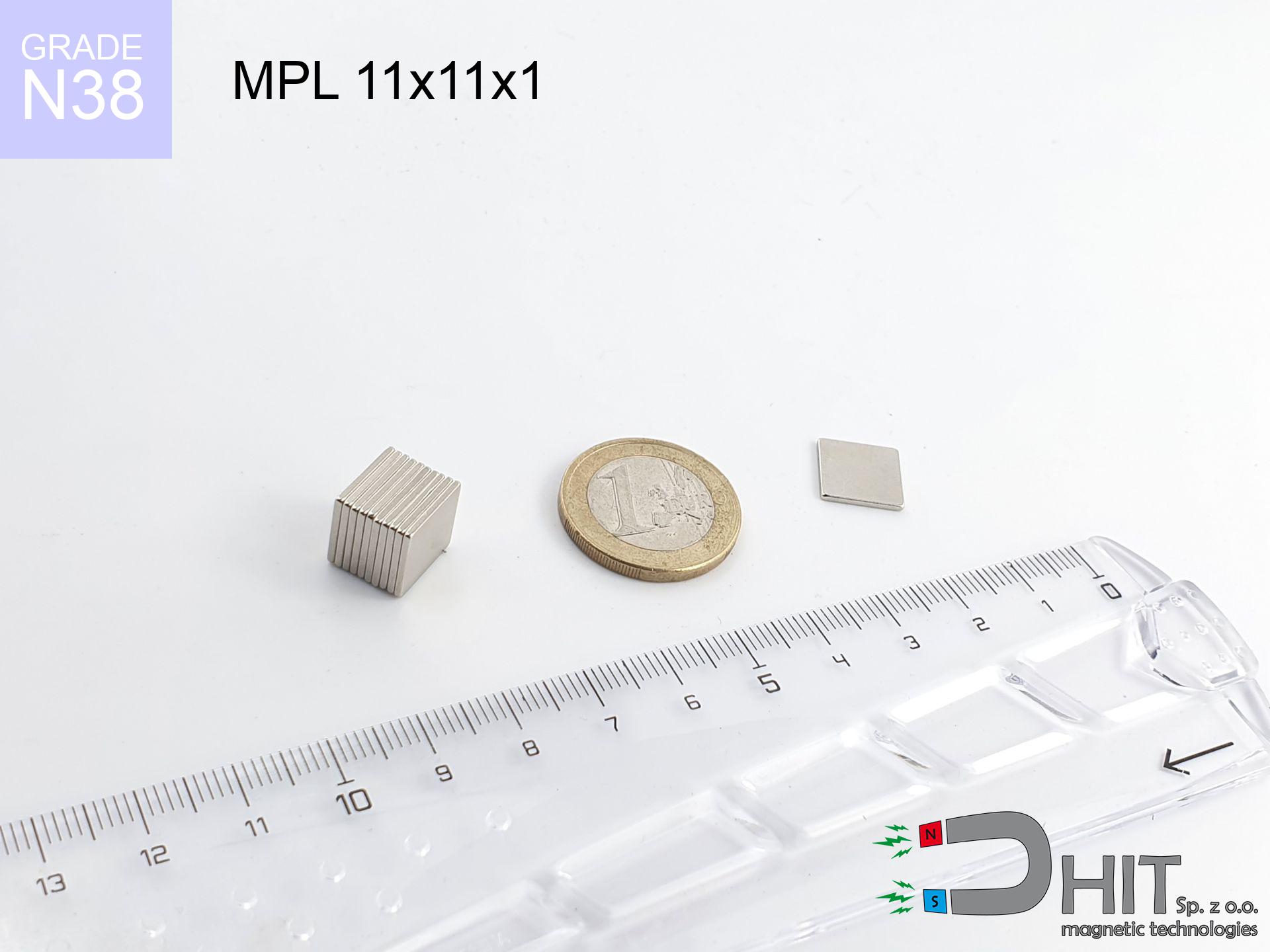ZM XMAG2 105 elementów - magnetic toy
magnetic toy
Catalog no 040211
GTIN/EAN: 5906301812371
Weight
0.03 g
Load capacity
0.03 kg / 0.26 N
49.20 ZŁ with VAT / pcs + price for transport
40.00 ZŁ net + 23% VAT / pcs
bulk discounts:
Need more?
Give us a call
+48 22 499 98 98
or contact us by means of
contact form
the contact section.
Strength along with form of a neodymium magnet can be verified using our
power calculator.
Orders placed before 14:00 will be shipped the same business day.
Physical properties - ZM XMAG2 105 elementów - magnetic toy
Specification / characteristics - ZM XMAG2 105 elementów - magnetic toy
| properties | values |
|---|---|
| Cat. no. | 040211 |
| GTIN/EAN | 5906301812371 |
| Production/Distribution | Dhit sp. z o.o. |
| Country of origin | Poland / China / Germany |
| Customs code | 85059029 |
| Weight | 0.03 g |
| Load capacity ~ ? | 0.03 kg / 0.26 N |
| Manufacturing Tolerance | ±1 mm |
Physical properties of sintered neodymium magnets Nd2Fe14B at 20°C
| properties | values | units |
|---|---|---|
| Vickers hardness | ≥550 | Hv |
| Density | ≥7.4 | g/cm3 |
| Curie Temperature TC | 312 - 380 | °C |
| Curie Temperature TF | 593 - 716 | °F |
| Specific resistance | 150 | μΩ⋅cm |
| Bending strength | 250 | MPa |
| Compressive strength | 1000~1100 | MPa |
| Thermal expansion parallel (∥) to orientation (M) | (3-4) x 10-6 | °C-1 |
| Thermal expansion perpendicular (⊥) to orientation (M) | -(1-3) x 10-6 | °C-1 |
| Young's modulus | 1.7 x 104 | kg/mm² |
Material specification
| iron (Fe) | 64% – 68% |
| neodymium (Nd) | 29% – 32% |
| boron (B) | 1.1% – 1.2% |
| dysprosium (Dy) | 0.5% – 2.0% |
| coating (Ni-Cu-Ni) | < 0.05% |
Environmental data
| recyclability (EoL) | 100% |
| recycled raw materials | ~10% (pre-cons) |
| carbon footprint | low / zredukowany |
| waste code (EWC) | 16 02 16 |
Check out more proposals
Strengths as well as weaknesses of Nd2Fe14B magnets.
Advantages
- They virtually do not lose strength, because even after 10 years the decline in efficiency is only ~1% (in laboratory conditions),
- Neodymium magnets remain remarkably resistant to loss of magnetic properties caused by external field sources,
- The use of an shiny layer of noble metals (nickel, gold, silver) causes the element to have aesthetics,
- The surface of neodymium magnets generates a intense magnetic field – this is one of their assets,
- Through (adequate) combination of ingredients, they can achieve high thermal strength, allowing for operation at temperatures approaching 230°C and above...
- Considering the option of precise shaping and adaptation to unique requirements, magnetic components can be modeled in a wide range of forms and dimensions, which expands the range of possible applications,
- Huge importance in modern technologies – they find application in magnetic memories, electromotive mechanisms, precision medical tools, and industrial machines.
- Relatively small size with high pulling force – neodymium magnets offer strong magnetic field in small dimensions, which makes them useful in compact constructions
Disadvantages
- They are fragile upon heavy impacts. To avoid cracks, it is worth securing magnets in special housings. Such protection not only shields the magnet but also increases its resistance to damage
- Neodymium magnets decrease their power under the influence of heating. As soon as 80°C is exceeded, many of them start losing their power. Therefore, we recommend our special magnets marked [AH], which maintain stability even at temperatures up to 230°C
- When exposed to humidity, magnets usually rust. To use them in conditions outside, it is recommended to use protective magnets, such as magnets in rubber or plastics, which secure oxidation as well as corrosion.
- Limited possibility of making nuts in the magnet and complicated shapes - preferred is cover - magnet mounting.
- Possible danger related to microscopic parts of magnets pose a threat, if swallowed, which gains importance in the context of child safety. It is also worth noting that tiny parts of these devices are able to be problematic in diagnostics medical after entering the body.
- High unit price – neodymium magnets have a higher price than other types of magnets (e.g. ferrite), which can limit application in large quantities
Lifting parameters
Breakaway strength of the magnet in ideal conditions – what contributes to it?
- using a sheet made of low-carbon steel, functioning as a ideal flux conductor
- possessing a massiveness of at least 10 mm to avoid saturation
- with an ground touching surface
- without any insulating layer between the magnet and steel
- under perpendicular force direction (90-degree angle)
- in temp. approx. 20°C
Practical lifting capacity: influencing factors
- Distance – existence of foreign body (rust, tape, air) interrupts the magnetic circuit, which lowers capacity steeply (even by 50% at 0.5 mm).
- Loading method – declared lifting capacity refers to pulling vertically. When slipping, the magnet holds much less (often approx. 20-30% of nominal force).
- Steel thickness – insufficiently thick sheet does not close the flux, causing part of the flux to be lost into the air.
- Plate material – mild steel attracts best. Alloy steels lower magnetic permeability and holding force.
- Surface quality – the smoother and more polished the plate, the better the adhesion and stronger the hold. Unevenness creates an air distance.
- Temperature influence – hot environment reduces magnetic field. Too high temperature can permanently damage the magnet.
Holding force was checked on a smooth steel plate of 20 mm thickness, when the force acted perpendicularly, however under attempts to slide the magnet the load capacity is reduced by as much as 5 times. In addition, even a small distance between the magnet’s surface and the plate lowers the holding force.
Precautions when working with neodymium magnets
Flammability
Combustion risk: Rare earth powder is highly flammable. Avoid machining magnets in home conditions as this may cause fire.
Choking Hazard
NdFeB magnets are not intended for children. Swallowing multiple magnets may result in them connecting inside the digestive tract, which poses a critical condition and necessitates immediate surgery.
Heat sensitivity
Avoid heat. Neodymium magnets are sensitive to heat. If you need operation above 80°C, inquire about HT versions (H, SH, UH).
Do not underestimate power
Handle magnets with awareness. Their powerful strength can shock even experienced users. Stay alert and do not underestimate their force.
Avoid contact if allergic
Studies show that the nickel plating (standard magnet coating) is a potent allergen. If you have an allergy, refrain from touching magnets with bare hands or select coated magnets.
Data carriers
Data protection: Strong magnets can ruin payment cards and sensitive devices (heart implants, medical aids, mechanical watches).
Risk of cracking
Watch out for shards. Magnets can fracture upon violent connection, launching shards into the air. Wear goggles.
Pinching danger
Big blocks can crush fingers instantly. Never put your hand between two strong magnets.
Impact on smartphones
GPS units and smartphones are extremely sensitive to magnetic fields. Direct contact with a powerful NdFeB magnet can decalibrate the sensors in your phone.
Danger to pacemakers
Medical warning: Neodymium magnets can deactivate heart devices and defibrillators. Stay away if you have medical devices.



![UMGGZ 22x6 [M4] GZ / N38 - rubber magnetic holder external thread UMGGZ 22x6 [M4] GZ / N38 - rubber magnetic holder external thread](https://cdn3.dhit.pl/graphics/products/umg-22x6-m4-gz-hiw.jpg)




